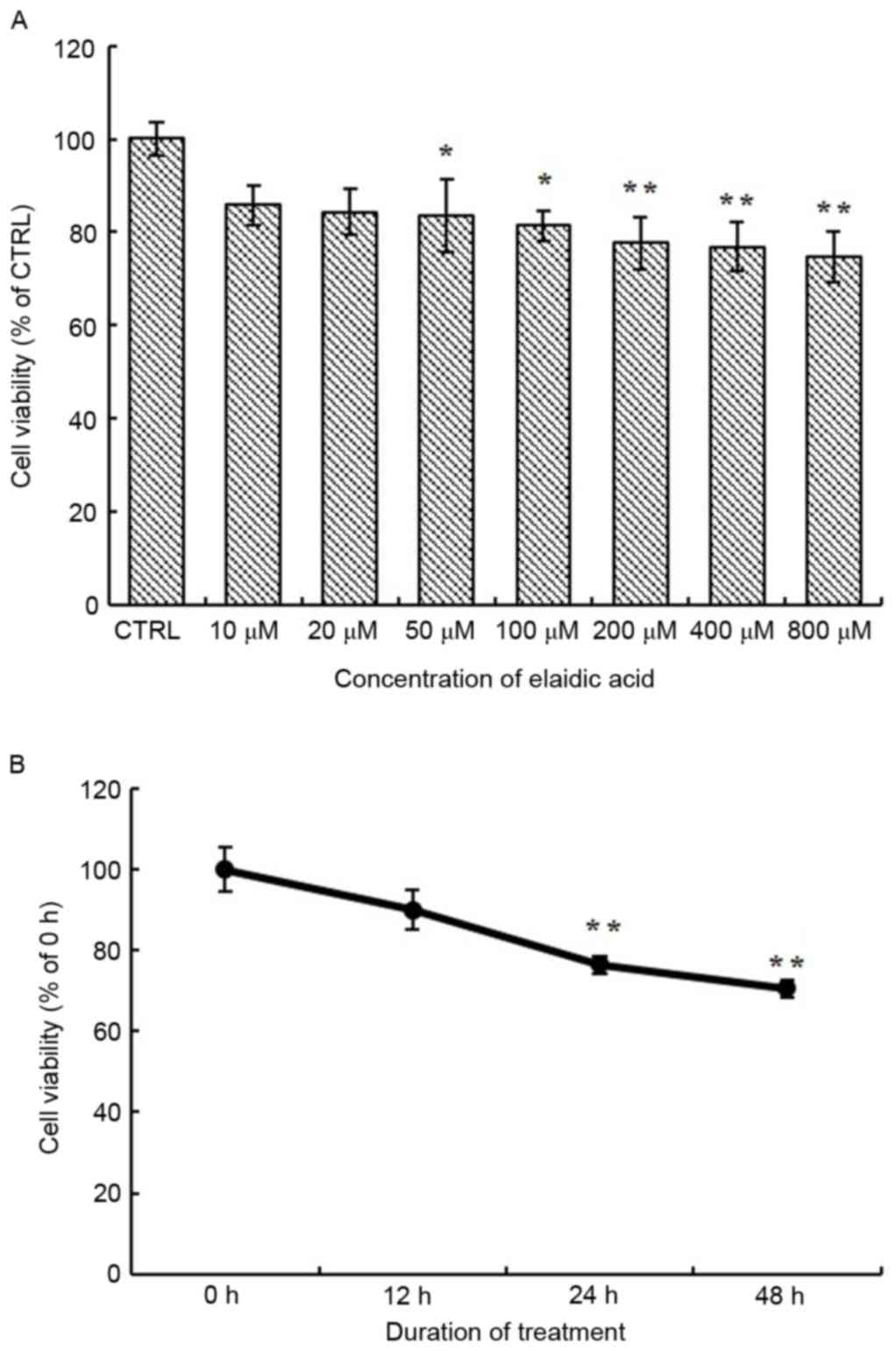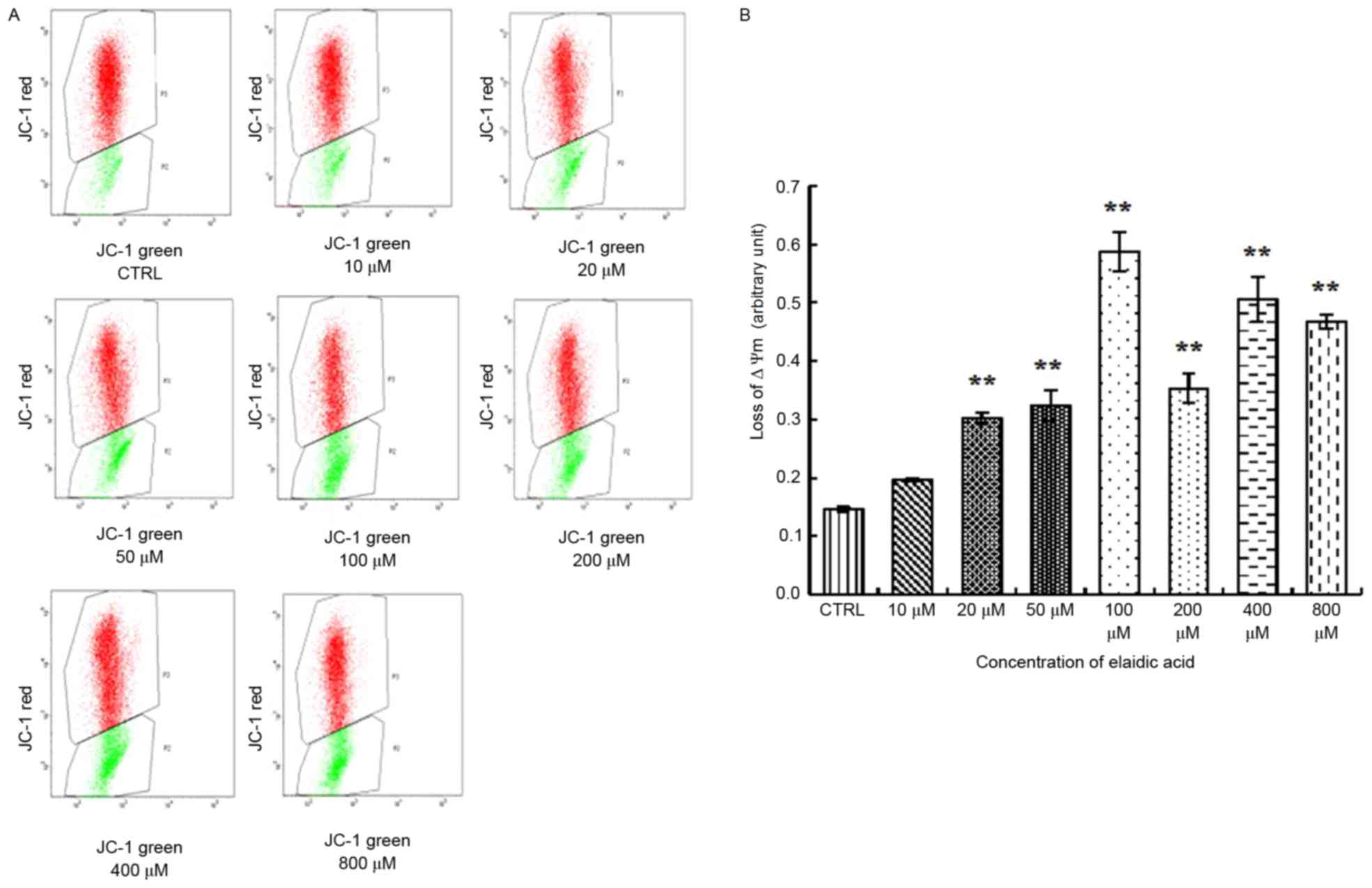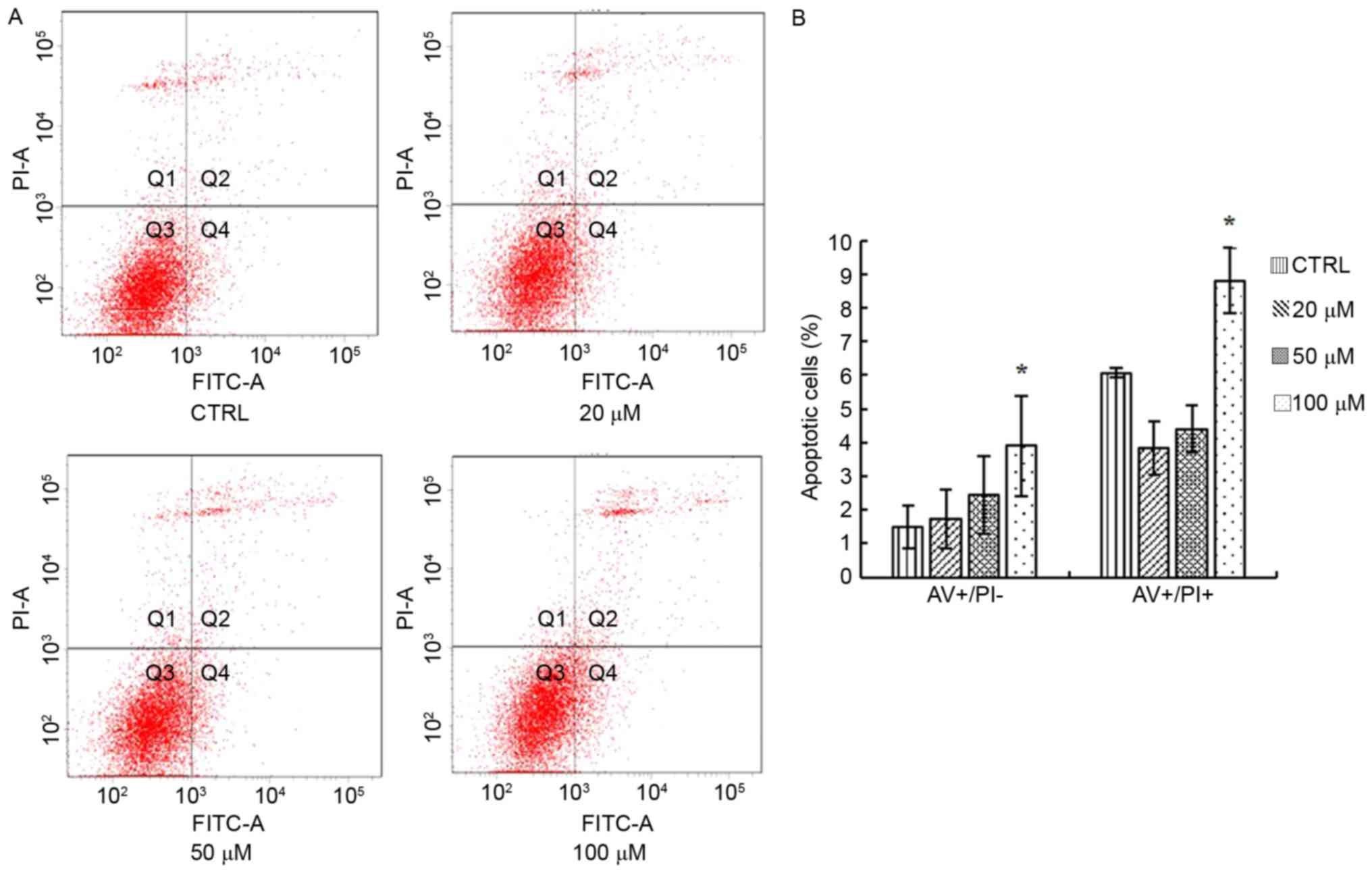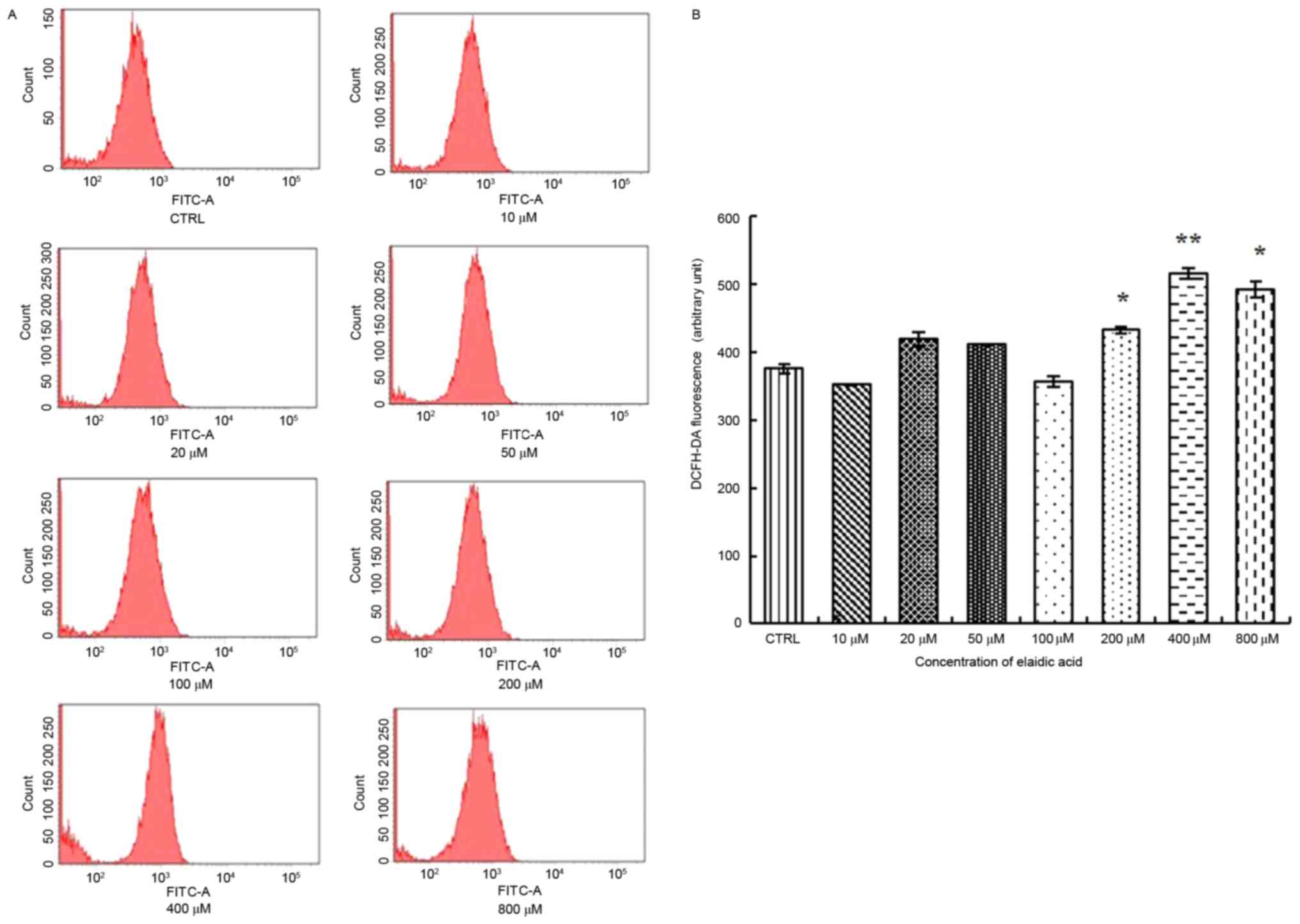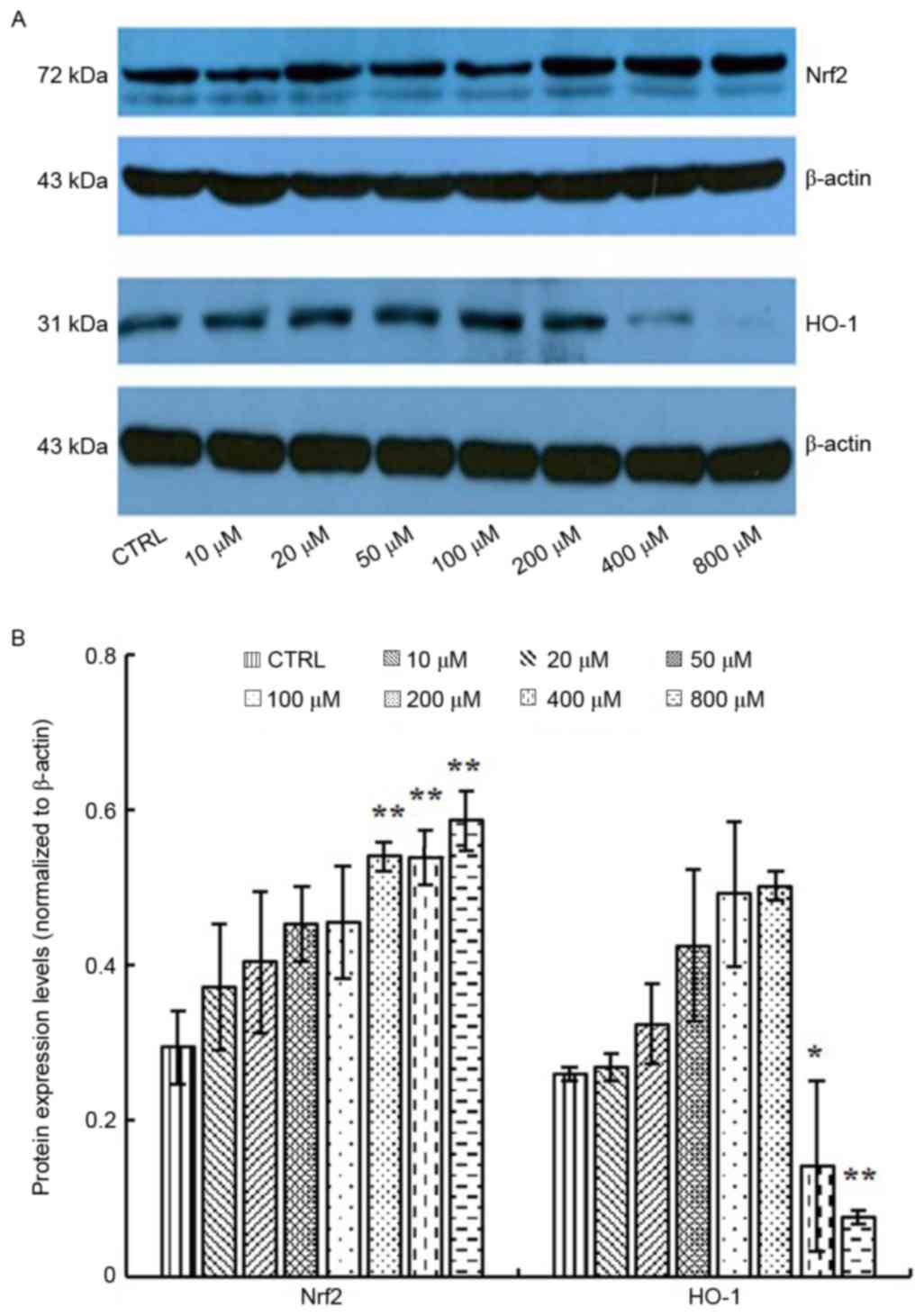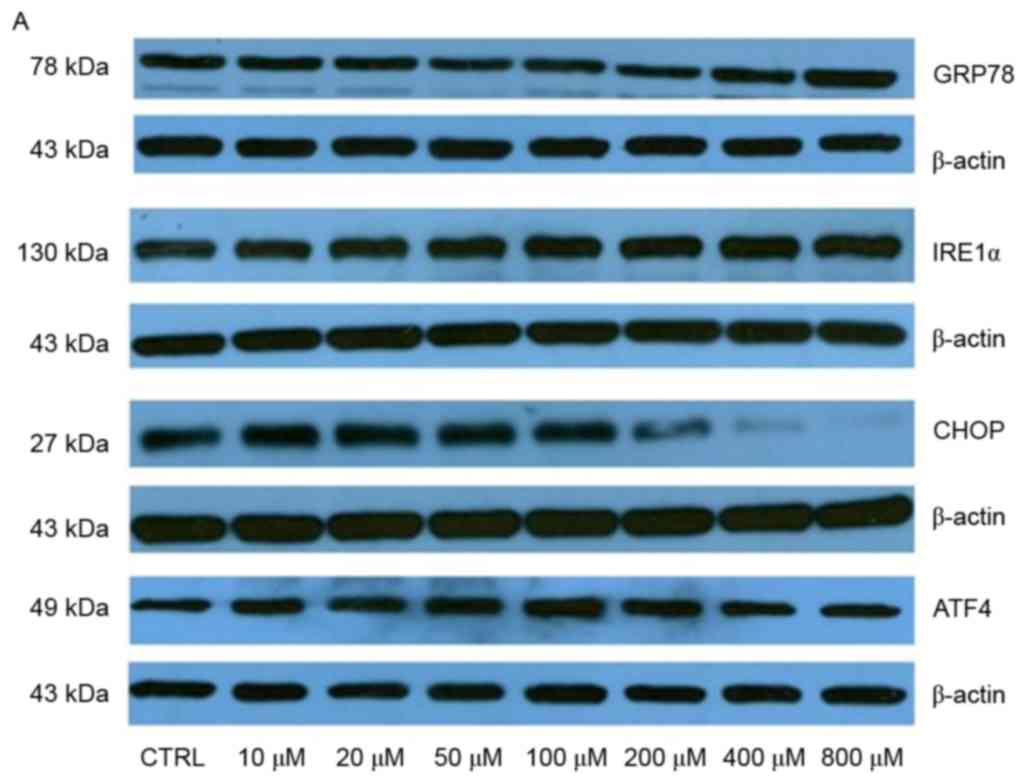|
1
|
Forman MS, Trojanowski JQ and Lee VM:
Neurodegenerative diseases: A decade of discoveries paves the way
for therapeutic breakthroughs. Nat Med. 10:1055–1063. 2004.
View Article : Google Scholar : PubMed/NCBI
|
|
2
|
Brown RC, Lockwood AH and Sonawane BR:
Neurodegenerative diseases: An overview of environmental risk
factors. Environ Health Perspect. 113:1250–1256. 2005. View Article : Google Scholar : PubMed/NCBI
|
|
3
|
Rozpedek W, Markiewicz L, Diehl JA, Pytel
D and Majsterek I: Unfolded protein response and PERK kinase as a
new therapeutic target in the pathogenesis of alzheimer's disease.
Curr Med Chem. 22:3169–3184. 2015. View Article : Google Scholar : PubMed/NCBI
|
|
4
|
Volgyi K, Juhász G, Kovacs Z and Penke B:
Dysfunction of endoplasmic reticulum (ER) and mitochondria (MT) in
Alzheimer's disease: The role of the ER-MT cross-talk. Curr
Alzheimer Res. 12:655–672. 2015. View Article : Google Scholar : PubMed/NCBI
|
|
5
|
Castellani R, Hirai K, Aliev G, Drew KL,
Nunomura A, Takeda A, Cash AD, Obrenovich ME, Perry G and Smith MA:
Role of mitochondrial dysfunction in Alzheimer's disease. J
Neurosci Res. 70:357–360. 2002. View Article : Google Scholar : PubMed/NCBI
|
|
6
|
Blesa J, Trigo-Damas I, Quiroga-Varela A
and Jackson-Lewis VR: Oxidative stress and Parkinson's disease.
Front Neuroanat. 9:912015. View Article : Google Scholar : PubMed/NCBI
|
|
7
|
Malhotra JD and Kaufman RJ: Endoplasmic
reticulum stress and oxidative stress: A vicious cycle or a
double-edged sword? Antioxid Redox Signal. 9:2277–2293. 2007.
View Article : Google Scholar : PubMed/NCBI
|
|
8
|
Barnard ND, Bunner AE and Agarwal U:
Saturated and trans fats and dementia: A systematic review.
Neurobiol Aging. 35 Suppl 2:S65–S73. 2014. View Article : Google Scholar : PubMed/NCBI
|
|
9
|
Morris MC and Tangney CC: Dietary fat
composition and dementia risk. Neurobiol Aging. 35 Suppl 2:S59–S64.
2014. View Article : Google Scholar : PubMed/NCBI
|
|
10
|
Lichtenstein AH: Dietary trans fatty acids
and cardiovascular disease risk: Past and present. Curr Atheroscler
Rep. 16:4332014. View Article : Google Scholar : PubMed/NCBI
|
|
11
|
Nielsen L Vendel, Krogager TP, Young C,
Ferreri C, Chatgilialoglu C, Nørregaard Jensen O and Enghild JJ:
Effects of elaidic acid on lipid metabolism in HepG2 cells,
investigated by an integrated approach of lipidomics,
transcriptomics and proteomics. PLoS One. 8:e742832013. View Article : Google Scholar : PubMed/NCBI
|
|
12
|
Perova NV, Metel'skaia VA and Boĭtsov SA:
Trans isomers of unsaturated fatty acids increase the risk of
atherosclerosis-related circulatory system diseases. Ter Arkh.
85:113–117. 2013.(In Russian). PubMed/NCBI
|
|
13
|
de Souza RJ, Mente A, Maroleanu A, Cozma
AI, Ha V, Kishibe T, Uleryk E, Budylowski P, Schünemann H, Beyene J
and Anand SS: Intake of saturated and trans unsaturated fatty acids
and risk of all cause mortality, cardiovascular disease, and type 2
diabetes: Systematic review and meta-analysis of observational
studies. BMJ. 351:h39782015. View Article : Google Scholar : PubMed/NCBI
|
|
14
|
Morris MC, Evans DA, Bienias JL, Tangney
CC, Bennett DA, Aggarwal N, Schneider J and Wilson RS: Dietary fats
and the risk of incident Alzheimer disease. Arch Neurol.
60:194–200. 2003. View Article : Google Scholar : PubMed/NCBI
|
|
15
|
Engelhart MJ, Geerlings MI, Ruitenberg A,
Van Swieten JC, Hofman A, Witteman JC and Breteler MM: Diet and
risk of dementia: Does fat matter? The rotterdam study. Neurology.
59:1915–1921. 2002. View Article : Google Scholar : PubMed/NCBI
|
|
16
|
Grimm MO, Rothhaar TL, Grösgen S, Burg VK,
Hundsdörfer B, Haupenthal VJ, Friess P, Kins S, Grimm HS and
Hartmann T: Trans fatty acids enhance amyloidogenic processing of
the Alzheimer amyloid precursor protein (APP). J Nutr Biochem.
23:1214–1223. 2012. View Article : Google Scholar : PubMed/NCBI
|
|
17
|
Morinaga M, Kon K, Saito H, Arai K, Kusama
H, Uchiyama A, Yamashina S, Ikejima K and Watanabe S: Sodium
4-phenylbutyrate prevents murine dietary steatohepatitis caused by
trans-fatty acid plus fructose. J Clin Biochem Nutr. 57:183–191.
2015. View Article : Google Scholar : PubMed/NCBI
|
|
18
|
Cassagno N, Palos-Pinto A, Costet P,
Breilh D, Darmon M and Bérard AM: Low amounts of trans 18:1 fatty
acids elevate plasma triacylglycerols but not cholesterol and alter
the cellular defence to oxidative stress in mice. Br J Nutr.
94:346–352. 2005. View Article : Google Scholar : PubMed/NCBI
|
|
19
|
Starr TK, Scott PM, Marsh BM, Zhao L, Than
BL, O'Sullivan MG, Sarver AL, Dupuy AJ, Largaespada DA and Cormier
RT: A sleeping beauty transposon-mediated screen identifies murine
susceptibility genes for adenomatous polyposis coli (Apc)-dependent
intestinal tumorigenesis. Proc Natl Acad Sci USA. 108:pp.
5765–5770. 2011; View Article : Google Scholar : PubMed/NCBI
|
|
20
|
Sakitani K, Hirata Y, Hikiba Y, Hayakawa
Y, Ihara S, Suzuki H, Suzuki N, Serizawa T, Kinoshita H, Sakamoto
K, et al: Inhibition of autophagy exerts anti-colon cancer effects
via apoptosis induced by p53 activation and ER stress. BMC Cancer.
15:7952015. View Article : Google Scholar : PubMed/NCBI
|
|
21
|
Sui C, Ma Q, Nan K, Xiao J, Suo A, Sha H
and Zhao L: hSSTR2 expression and octreotide treatment reverses
multidrug resistance of BxPC-3 human pancreatic cancer cells. Oncol
Rep. 22:1391–1396. 2009.PubMed/NCBI
|
|
22
|
Gong X, Zhang L, Jiang R, Ye M, Yin X and
Wan J: Anti-inflammatory effects of mangiferin on sepsis-induced
lung injury in mice via up-regulation of heme oxygenase-1. J Nutr
Biochem. 24:1173–1181. 2013. View Article : Google Scholar : PubMed/NCBI
|
|
23
|
Takahashi T, Shimizu H, Morimatsu H,
Maeshima K, Inoue K, Akagi R, Matsumi M, Katayama H and Morita K:
Heme Oxygenase-1 is an essential cytoprotective component in
oxidative tissue injury induced by hemorrhagic shock. J Clin
Biochem Nutr. 44:28–40. 2009. View Article : Google Scholar : PubMed/NCBI
|
|
24
|
van Poppel G: Intake of trans fatty acids
in western Europe: The TRANSFAIR study. Lancet. 351:10991998.
View Article : Google Scholar : PubMed/NCBI
|
|
25
|
Jokela H, Kalela A, Lilja M, Salmi M,
Lehtimäki T, Kunnas T, Teisala K, Punnonen R and Nikkari ST:
Sequentially combined estradiol valerate plus levonorgestrel
therapy decreases 18:1 trans-fatty acid content of plasma lipids in
healthy postmenopausal women. Gynecol Endocrinol. 21:360–365. 2005.
View Article : Google Scholar : PubMed/NCBI
|
|
26
|
Svahn JC, Feldl F, Räihä NC, Koletzko B
and Axelsson IE: Different quantities and quality of fat in milk
products given to young children: Effects on long chain
polyunsaturated fatty acids and trans fatty acids in plasma. Acta
Paediatr. 91:20–29. 2002. View Article : Google Scholar : PubMed/NCBI
|
|
27
|
Abraham RA, Bahl VK, Parshad R, Seenu V,
Roy A, Golandaz S, Dorairaj P and Ramakrishnan L: Content of trans
fatty acids in human cheek epithelium: Comparison with serum and
adipose tissue. Biomed Res Int. 2013:2761742013. View Article : Google Scholar : PubMed/NCBI
|
|
28
|
Sun Q, Ma J, Campos H, Hankinson SE,
Manson JE, Stampfer MJ, Rexrode KM, Willett WC and Hu FB: A
prospective study of trans fatty acids in erythrocytes and risk of
coronary heart disease. Circulation. 115:1858–1865. 2007.
View Article : Google Scholar : PubMed/NCBI
|
|
29
|
Burdge GC, Tricon S, Morgan R, Kliem KE,
Childs C, Jones E, Russell JJ, Grimble RF, Williams CM, Yaqoob P
and Calder PC: Incorporation of cis-9, trans-11 conjugated linoleic
acid and vaccenic acid (trans-11 18:1) into plasma and leucocyte
lipids in healthy men consuming dairy products naturally enriched
in these fatty acids. Br J Nutr. 94:237–243. 2005. View Article : Google Scholar : PubMed/NCBI
|
|
30
|
Itoh K, Tong KI and Yamamoto M: Molecular
mechanism activating Nrf2-Keap1 pathway in regulation of adaptive
response to electrophiles. Free Radic Biol Med. 36:1208–1213. 2004.
View Article : Google Scholar : PubMed/NCBI
|
|
31
|
Henderson MJ, Baldwin HA, Werley CA,
Boccardo S, Whitaker LR, Yan X, Holt GT, Schreiter ER, Looger LL,
Cohen AE, et al: A low affinity GCaMP3 variant (GCaMPer) for
imaging the endoplasmic reticulum calcium store. PLoS One.
10:e01392732015. View Article : Google Scholar : PubMed/NCBI
|
|
32
|
Schwarz DS and Blower MD: The endoplasmic
reticulum: Structure, function and response to cellular signaling.
Cell Mol Life Sci. 73:79–94. 2016. View Article : Google Scholar : PubMed/NCBI
|
|
33
|
Bakhshi J, Weinstein L, Poksay KS,
Nishinaga B, Bredesen DE and Rao RV: Coupling endoplasmic reticulum
stress to the cell death program in mouse melanoma cells: Effect of
curcumin. Apoptosis. 13:904–914. 2008. View Article : Google Scholar : PubMed/NCBI
|
|
34
|
Xu D, Perez RE, Rezaiekhaligh MH, Bourdi M
and Truog WE: Knockdown of ERp57 increases BiP/GRP78 induction and
protects against hyperoxia and tunicamycin-induced apoptosis. Am J
Physiol Lung Cell Mol Physiol. 297:L44–L51. 2009. View Article : Google Scholar : PubMed/NCBI
|
|
35
|
Feng J, Chen X and Sun X, Wang F and Sun
X: Expression of endoplasmic reticulum stress markers GRP78 and
CHOP induced by oxidative stress in blue light-mediated damage of
A2E-containing retinal pigment epithelium cells. Ophthalmic Res.
52:224–233. 2014. View Article : Google Scholar : PubMed/NCBI
|
|
36
|
Ferreiro E, Baldeiras I, Ferreira IL,
Costa RO, Rego AC, Pereira CF and Oliveira CR: Mitochondrial- and
endoplasmic reticulum-associated oxidative stress in Alzheimer's
disease: From pathogenesis to biomarkers. Int J Cell Biol.
2012:7352062012. View Article : Google Scholar : PubMed/NCBI
|
|
37
|
Chen Y and Brandizzi F: AtIRE1A/AtIRE1B
and AGB1 independently control two essential unfolded protein
response pathways in Arabidopsis. Plant J. 69:266–277. 2012.
View Article : Google Scholar : PubMed/NCBI
|
|
38
|
Nagashima Y, Mishiba K, Suzuki E, Shimada
Y, Iwata Y and Koizumi N: Arabidopsis IRE1 catalyses unconventional
splicing of bZIP60 mRNA to produce the active transcription factor.
Sci Rep. 1:292011. View Article : Google Scholar : PubMed/NCBI
|
|
39
|
Kim I, Xu W and Reed JC: Cell death and
endoplasmic reticulum stress: Disease relevance and therapeutic
opportunities. Nat Rev Drug Discov. 7:1013–1030. 2008. View Article : Google Scholar : PubMed/NCBI
|
|
40
|
Bertolotti A, Zhang Y, Hendershot LM,
Harding HP and Ron D: Dynamic interaction of BiP and ER stress
transducers in the unfolded-protein response. Nat Cell Biol.
2:326–332. 2000. View Article : Google Scholar : PubMed/NCBI
|
|
41
|
Szegezdi E, Logue SE, Gorman AM and Samali
A: Mediators of endoplasmic reticulum stress-induced apoptosis.
EMBO Rep. 7:880–885. 2006. View Article : Google Scholar : PubMed/NCBI
|
|
42
|
Benham AM, van Lith M, Sitia R and
Braakman I: Ero1-PDI interactions, the response to redox flux and
the implications for disulfide bond formation in the mammalian
endoplasmic reticulum. Philos Trans R Soc Lond B Biol Sci.
368:201104032013. View Article : Google Scholar : PubMed/NCBI
|



